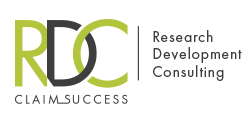[vc_row][vc_column][vc_column_text]
SR&ED PROGRAM FACTS
- The Scientific Research & Experimental Development (SR&ED) Program is one of Canada’s largest tax incentive programs.
- Almost 50% of costs expended in research and development work can be recovered every fiscal year. These federal and provincial tax benefits combine to make Canada’s R&D system one of the most generous tax incentive programs in the world.
- The SR&ED program is administered by the Canada Customs & Revenue Agency (CCRA).
The SR&ED program is intended to create a supportive environment for Canadians to carry out research and development (R&D). - Development of new or improved products/processes may qualify for substantial refunds and/or tax credits under the Scientific Research and Experimental Development (SR&ED) Program.
- Two types of refunds or credits are received: federal and provincial. The federal refund or Innovation Tax Credit (ITC) is 35% of total costs and overhead for CCPC’s and 20% for sole proprietorships and public corporations.
- Approximately 12,000 companies claim Scientific Research & Experimental Development tax credits each year. This amounts to $1.5 billion that is paid out annually by the Canada Revenue Agency (CRA).
- 75% of claims made annually are from small or midsized companies whose R&D expenditures range from $20,000 to $2,000,000.
- Qualifying companies get money back as an income tax refund, an investment tax credit, or a combination of refund and credit.
- Most Canadian-Controlled Private Corporations (CCPC’s) can receive a 35% federal refundable tax credit. In addition, a provincial tax credit of 10% is available in most provinces.
- A non-refundable tax credit can reduce current year’s taxes payable dollar-for-dollar, can be carried back three years to recover taxes previously paid, or can be carried forward ten years to reduce taxes payable in the future.
- A company must file its claim no later than 18 months after the end of its fiscal year, regardless of whether it has already filed its corporate tax returns.
- Your company may fully deduct both the current and capital R&D expenditures from taxable income. Alternatively, the deductions can be deferred indefinitely at your discretion. The Federal Investment Tax Credits are fully refundable in cash (within certain limits), even if your company has no tax otherwise payable.
- Sole proprietorships and public corporations earn non-refundable ITCs at a rate of 20%. These tax credits can be applied against taxes otherwise payable. If your Federal Investment Tax Credits exceed your income tax, you can carry back the excess credits and apply them against income tax in any of the three preceding years, or carry them forward for use in the next ten years.
[/vc_column_text][/vc_column][/vc_row]
